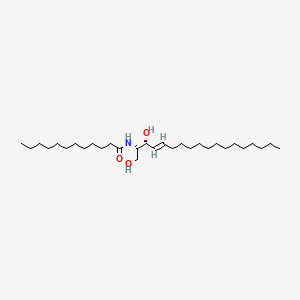
|
Laurylsphingosine |
Laurylsphingosine is a lipid of Sphingolipids (SP) class. Laurylsphingosine is associated with abnormalities such as BOSLEY-SALIH-ALORAINY SYNDROME, Obesity and Diabetes Mellitus, Non-Insulin-Dependent. The involved functions are known as ceramide biosynthetic process, Anabolism, Signal, Signal Transduction and Transcriptional Activation. Laurylsphingosine often locates in Protoplasm, Plasma membrane, Epidermis, lamellar body and Stratum corneum. The associated genes with Laurylsphingosine are CFB gene. The related lipids are Nonesterified Fatty Acids, Fatty Acids, Sphingolipids, Palmitates and Stearates. |
45 |
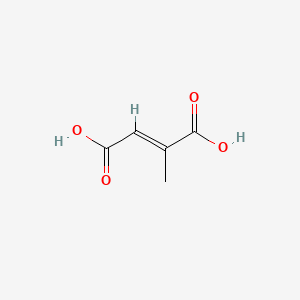
|
Mesaconic acid |
Mesaconic acid is a lipid of Fatty Acyls (FA) class. |
82 |
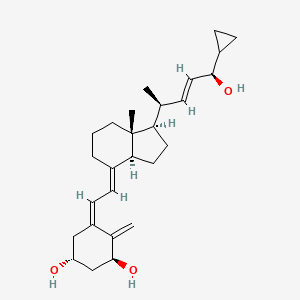
|
Calcipotriene |
Calcipotriene is a lipid of Sterol Lipids (ST) class. |
105 |
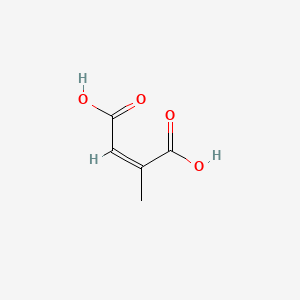
|
Citraconic acid |
Citraconic acid is a lipid of Fatty Acyls (FA) class. |
117 |
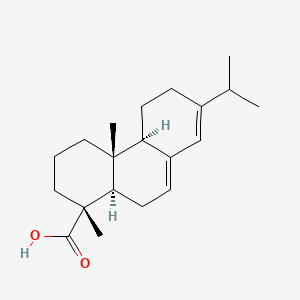
|
Abietic acid |
Abietic acid is a lipid of Prenol Lipids (PR) class. Abietic acid is associated with abnormalities such as Hand eczema, Dermatitis, Vitelliform dystrophy, Wiskott-Aldrich Syndrome and Dehydration. The involved functions are known as Process, Oxidation, Anabolism, Transmembrane Transport and physiological aspects. Abietic acid often locates in Membrane, Protoplasm, Microsomes and Cellular Membrane. The associated genes with Abietic acid are SLC33A1 gene and ABCG2 gene. The related lipids are Pinene. |
280 |
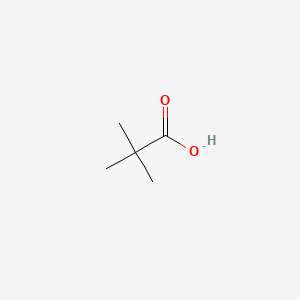
|
Pivalic acid |
Pivalic acid is a lipid of Fatty Acyls (FA) class. Pivalic acid is associated with abnormalities such as Renal carnitine transport defect, Carnitine deficiency, Urinary tract infection, Otitis Media and Chronic infectious disease. The involved functions are known as carnitine transport, Uptake, inhibitors, Oxidation and Intestinal Absorption. Pivalic acid often locates in Grey line. The related lipids are pivalic acid and Fatty Acids. |
411 |
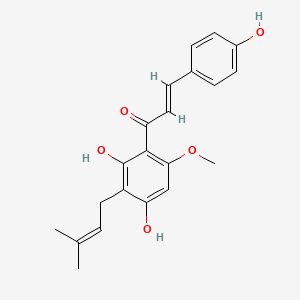
|
Xanthohumol |
Xanthohumol is a lipid of Polyketides (PK) class. Xanthohumol is associated with abnormalities such as Endometriosis, site unspecified, Cyst, peritoneal lesion, Proliferative inflammation and furuncle. The involved functions are known as Cell Proliferation, Signal Transduction, Pathologic Neovascularization, Adverse effects and Proliferation (morphologic abnormality). Xanthohumol often locates in peritoneal, Mesentery, Membrane, Tissue specimen from uterus and Cell Nucleus. The associated genes with Xanthohumol are PI3 gene, KEAP1 gene, SLC33A1 gene, BCR-ABL Fusion Gene and BIRC5 gene. The related lipids are Fatty Acids and Palmitates. The related experimental models are Knock-out. |
465 |

|
PE(15:0/20:0) |
PE(15:0/20:0) is a lipid of Glycerophospholipids (GP) class. Pe(15:0/20:0) is associated with abnormalities such as Exanthema, Infection, Painful Bladder Syndrome, Obesity and Fatty Liver. The involved functions are known as conjugation, Transcription, Genetic, Sinking, Autophagy and Protein Biosynthesis. Pe(15:0/20:0) often locates in membrane fraction, soluble, Membrane, Body tissue and Tissue membrane. The associated genes with PE(15:0/20:0) are GABARAPL2 gene, ATG10 gene, ATG12 gene, SLC33A1 gene and GABARAP gene. The related lipids are Liposomes, Lipopolysaccharides, Phosphatidylserines, Membrane Lipids and Cardiolipins. The related experimental models are Knock-out and Cancer Model. |
723 |
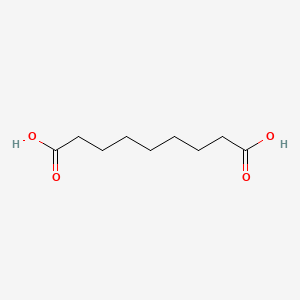
|
Azelaic acid |
Azelaic acid is a lipid of Fatty Acyls (FA) class. Azelaic acid is associated with abnormalities such as Bacterial Infections and Infection. The involved functions are known as Anabolism, Signal Transduction, Plant Immunity, Signal and Signal Transduction Pathways. Azelaic acid often locates in Body tissue. The associated genes with Azelaic acid are AZI1 gene, FKBPL gene and MLL gene. The related lipids are sebacic acid. |
783 |
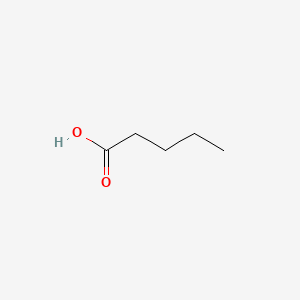
|
Valeric acid |
Valeric acid is a lipid of Fatty Acyls (FA) class. Valeric acid is associated with abnormalities such as Papillon-Lefevre Disease, Obesity, Diabetes Mellitus, Non-Insulin-Dependent and Dehydration. The involved functions are known as Process, Odorant, Stimulus, Irritation and Phenomenon. Valeric acid often locates in Receptive field, soluble, Extracellular, Entire gastrointestinal tract and Body tissue. The associated genes with Valeric acid are Orthologous Gene, Fusion Gene and AS gene. The related lipids are Valerates, butyrate, Propionate, Caproates and Palmitates. |
838 |









